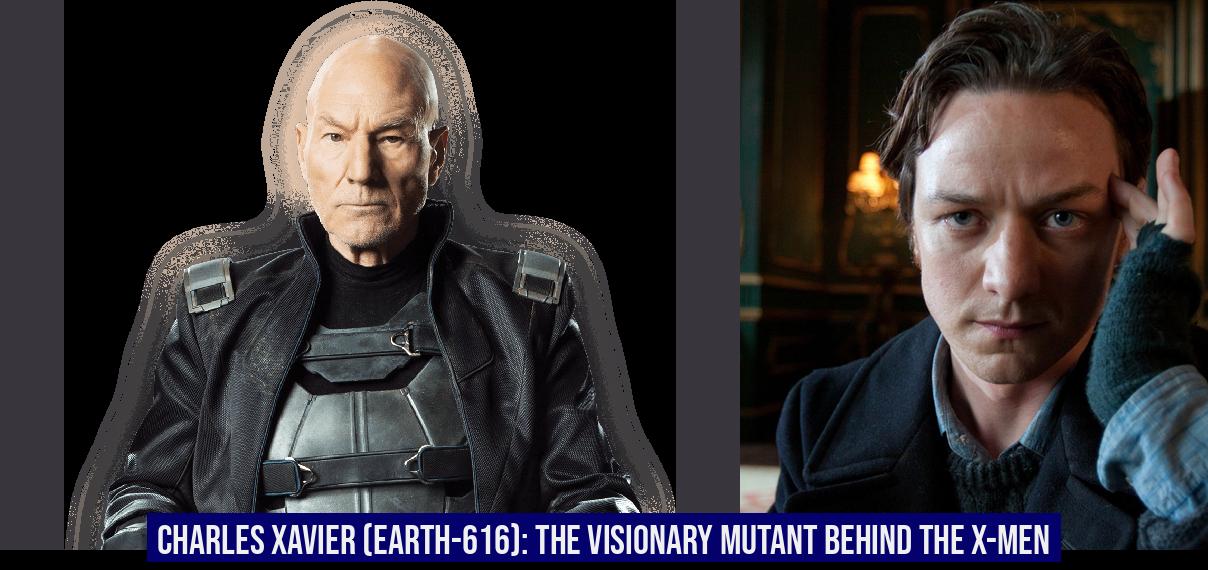Charles Xavier (Earth-616) Wiki Charles Xavier (Earth-616): The Psyche of a Mutant Visionary
Unveiling the life and legacy of the founder of the X-Men, Professor Charles Xavier.
Who is Charles Xavier?
Charles Xavier is a powerful mutant with extraordinary telepathic abilities, recognized as both a visionary leader and the founder of the Uncanny X-Men. With immense support from Dr. Moira MacTaggert, Xavier has devoted his life to fostering harmony between mutants and humans, tirelessly working towards his dream of a peaceful coexistence.
The Early Years
Born to Dr. Brian Xavier and his wife Sharon, Charles Xavier was anything but ordinary. Even before birth, he exhibited signs of his telepathic powers, showcasing an instinct to eliminate perceived threats, which led to the tragic miscarriage of his twin. Charles’s formative years were marked by tragedy and manipulation, complicated by the sinister involvement of Mister Sinister in his father’s research on genetic mutations. At only nine, his life took another heartbreaking turn when he lost his father in an accident, prompting his mother to remarry Dr. Kurt Marko, leading to a turbulent family environment filled with abuse and conflict.
A Journey of Discovery and Conflict
As a young adult, Xavier traveled extensively to deepen his understanding of mutantkind and the world around him. Through these travels, he met Magneto, his future arch-nemesis, who represented an opposing ideology concerning mutants’ relationship with humanity. Xavier found himself increasingly at odds with the complexities of human prejudice and mutant oppression, and it would influence his life’s purpose profoundly.
A Scholar’s Path
Following his early exploits, Xavier ventured to Oxford University on a scholarship, focusing on genetics and social implications of mutations. During a fortuitous encounter, he met Moira Kinross who unveiled a startling truth—she was also a mutant and had shared numerous lives. This profound revelation changed Xavier’s perspective on the futures of mutants, pushing him toward his lifelong vision of a united mutant community.
Tragedy Strikes
In an unexpected turn of events during a confrontation with the alien Lucifer in the Himalayas, Xavier was left paraplegic after a battle that showcased the brutal nature of his powers and the cost of conflict. During his recovery, he channeled his newfound determination to create a haven for young mutants, leading to the establishment of Xavier’s School for Gifted Youngsters—a sanctuary for mutants striving to find their place in a world that often rejects them.
The Formation of the X-Men
Professor Xavier gathered a group of exceptionally gifted students, forming the first iteration of the X-Men. This group became a beacon of hope and a steadfast defense for mutants who encountered discrimination and hatred from a fearful world. Under Xavier’s guidance, the X-Men advocated for understanding and coexistence, embodying Xavier’s dream. However, as time progressed, ideological rifts formed, particularly with Magneto’s perspective on mutant supremacy.
A Shift in Paradigm
Over decades of struggle, Professor X’s approach evolved in response to the dangers mutantkind faced from human antagonism. In a significant and controversial move, he aligned with Magneto to establish a mutant nation on the island of Krakoa, a fresh start intended to safeguard mutant existence and autonomy. As the head of this new society, Xavier’s role transcended his previous position solely focused on the X-Men, heralding a new era for mutants.
Legacy and Continuing Struggles
Despite facing formidable opposition and navigating ethical dilemmas, Charles Xavier remains a pivotal figure in mutant history. A complex character who has transitioned from an idealist to a pragmatic leader, he has continually inspired hope amidst adversity, demonstrating that the aspiration for harmony can survive, even in the face of profound societal fractures. Xavier’s legacy is a testament to the resilience of the frail human condition and the indomitable spirit of coexistence.
Conclusion
Though Charles Xavier’s journey is marked by challenges and profound sacrifices, his undying commitment to unity embodies a universal fight for acceptance and understanding. As we explore the intricacies of his character, it becomes evident that Charles Xavier is more than just a superhero; he is an emblem of hope, dreaming of a world where all coexist peacefully, a desire that resonates deeply in our societal narratives today.
This blog post not only expounds upon the life of Charles Xavier (Earth-616) but aims to weave a narrative that deeply resonates with both fans and new readers alike. His journey, marked by profound revelations, tragedies, and triumphs, mirrors the universal struggle for acceptance, making it a fitting exploration for the New York Times.
Who is Charles Xavier and what are his main contributions?
Charles Xavier is a powerful mutant known for his extraordinary telepathic abilities. He is recognized as the visionary leader and founder of the Uncanny X-Men, dedicating his life to fostering harmony between mutants and humans, and working tirelessly towards peaceful coexistence.
What were the early challenges faced by Charles Xavier?
Charles Xavier faced numerous challenges in his early years, including the tragic miscarriage of his twin before birth, the loss of his father at a young age, and a turbulent family life marked by abuse after his mother remarried. These experiences shaped his understanding of human prejudice and mutant oppression.
How did Charles Xavier’s education influence his mission?
Xavier’s education at Oxford University, where he focused on genetics and the social implications of mutations, played a crucial role in shaping his mission. A significant encounter with Moira Kinross, who revealed her own mutant identity, deepened his understanding of mutants’ futures and propelled him towards his vision of a united mutant community.
What led to the formation of the X-Men?
After a life-changing confrontation with the alien Lucifer that left him paraplegic, Xavier was determined to create a safe haven for young mutants. This led to the establishment of Xavier’s School for Gifted Youngsters and the formation of the X-Men, a group that became a symbol of hope and defense for mutants facing discrimination.

